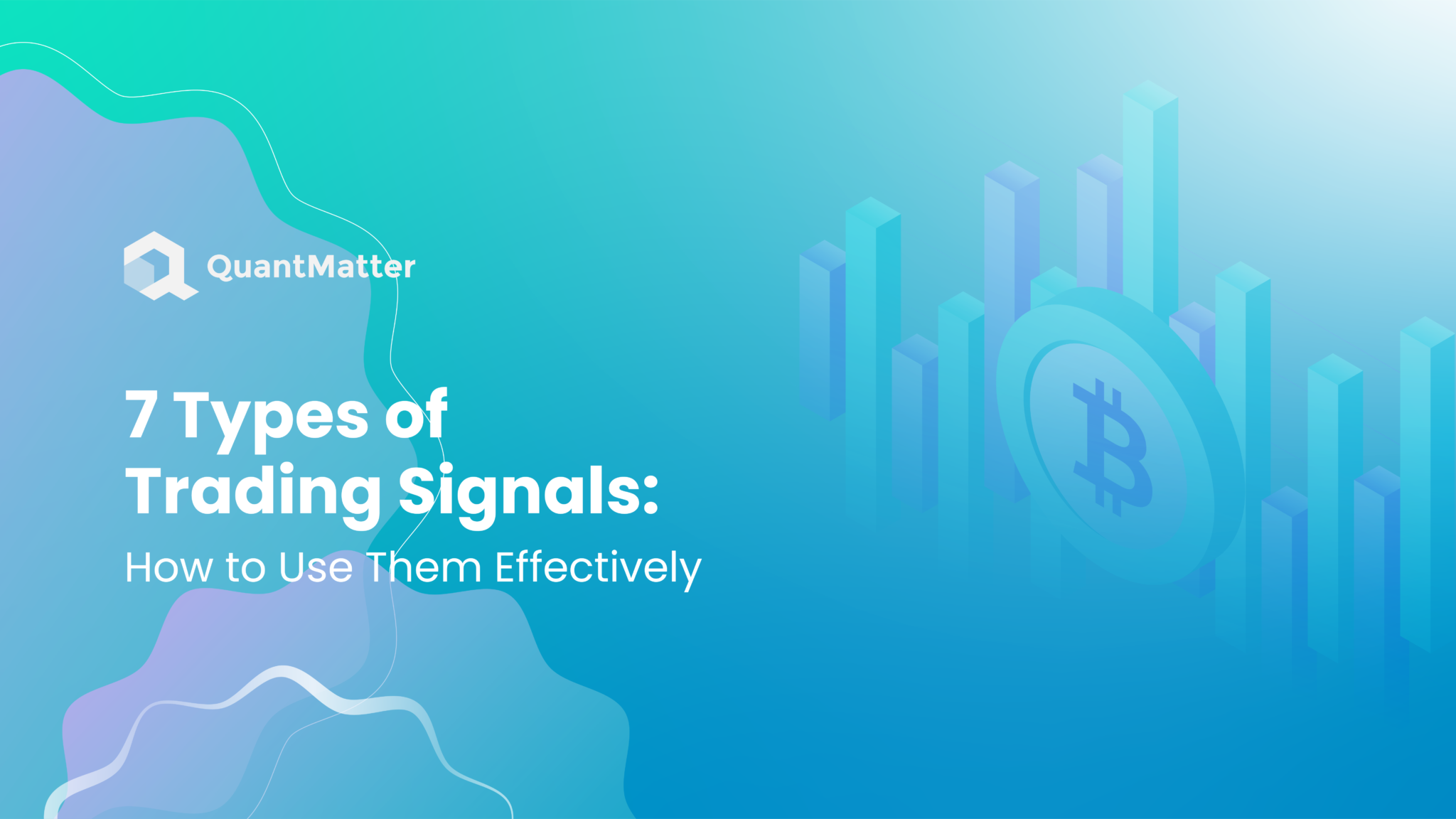
Trading signals play a crucial role in the decision-making process for traders across different markets. They serve as indicators, helping traders determine the right time to buy or sell assets. These signals are derived from various sources, including technical analysis, fundamental analysis, and market sentiment. Understanding how to interpret and use trading signals can significantly enhance your trading strategies and improve your overall success rate.
In this article, we will explore seven types of trading signals and provide insights on how to use them effectively. We will also discuss other key topics related to trading signals, including the importance of signal accuracy, the role of automation in trading, and the impact of market conditions on signal reliability. Whether you are a novice trader or an experienced one, mastering these signals can give you a competitive edge in the markets.
By the end of this article, you will have a comprehensive understanding of the different types of trading signals and how to leverage them to make informed trading decisions. Let’s dive in and explore the world of trading signals.
Understanding Trading Signals

Trading signals are indications or triggers that suggest potential market entry or exit points. These signals can be generated by various methods, such as technical analysis, which involves chart patterns and indicators, or fundamental analysis, which considers economic data and news events. The primary goal of trading signals is to provide traders with actionable information that can help them make profitable trades.
Why Are Trading Signals Important?
Trading signals are important because they help traders identify opportunities and manage risks. By following reliable signals, traders can make more informed decisions and avoid emotional trading, which often leads to losses. Additionally, trading signals can save time by automating parts of the analysis process, allowing traders to focus on strategy execution.
How to Interpret Trading Signals
Interpreting trading signals requires a good understanding of the market and the specific indicators being used. It’s important to consider the context in which a signal is generated and to use multiple signals to confirm trading decisions. Combining different types of signals can increase the accuracy and reliability of your trades.
7 Types of Trading Signals You Should Know

Trading signals are crucial tools for traders and investors looking to enhance their trading strategies and make informed decisions in the financial markets. These signals are generated based on various technical indicators and patterns that help traders identify potential buying or selling opportunities. In this article, we will explore seven types of trading signals that can help you navigate the complex world of trading with greater confidence and precision.
1. Moving Averages
Moving averages are one of the most fundamental and widely used trading signals in technical analysis. They smooth out price data to create a single flowing line that helps traders identify trends over a specific period. The two main types of moving averages are the simple moving average (SMA) and the exponential moving average (EMA).
- Simple Moving Average (SMA): This is calculated by taking the average of a security’s price over a set number of periods. For example, a 50-day SMA is the average closing price over the past 50 days.
- Exponential Moving Average (EMA): Unlike the SMA, the EMA gives more weight to recent prices, making it more responsive to new information. This is particularly useful for short-term trading.
Also Read: How Market Making Algorithms Works? The Future Of Crypto
Traders often look for moving average crossovers, where a short-term moving average (like the 50-day SMA) crosses above or below a long-term moving average (like the 200-day SMA). A crossover where the short-term average moves above the long-term average is known as a “golden cross” and typically signals a potential buy opportunity. Conversely, a crossover where the short-term average moves below the long-term average is known as a “death cross” and may signal a potential sell opportunity. By incorporating moving averages into their analysis, traders can more effectively identify the direction and strength of a trend.
2. Relative Strength Index (RSI)
The Relative Strength Index (RSI) is a momentum oscillator that measures the speed and change of price movements. It ranges from 0 to 100 and is typically used to identify overbought or oversold conditions in a market.
- Overbought Conditions: When the RSI is above 70, it suggests that the security may be overbought and due for a price correction. This condition often signals a potential sell opportunity.
- Oversold Conditions: Conversely, when the RSI is below 30, it indicates that the security may be oversold and poised for a price increase, signaling a potential buy opportunity.
The RSI can also help traders identify divergences, which occur when the price of a security moves in the opposite direction of the RSI. For example, if the price is making new highs while the RSI is making lower highs, this bearish divergence could indicate a potential price reversal. By monitoring the RSI, traders can gain insights into the strength and sustainability of a price trend.
3. Bollinger Bands
Bollinger Bands are a popular technical analysis tool that consists of three lines: a middle band (which is a simple moving average), and two outer bands that are standard deviations away from the middle band. These bands adjust dynamically based on market volatility.
- Upper Band: When the price touches or moves above the upper band, it may indicate that the security is overbought, suggesting a potential sell opportunity.
- Lower Band: When the price touches or moves below the lower band, it may indicate that the security is oversold, suggesting a potential buy opportunity.
Bollinger Bands help traders identify periods of high or low volatility and potential price reversals. The bands widen during periods of increased volatility and contract during periods of low volatility. Traders often look for Bollinger Band squeezes, where the bands narrow significantly, as this can signal an impending breakout in either direction. By using Bollinger Bands, traders can better understand market conditions and make more informed trading decisions.
4. MACD (Moving Average Convergence Divergence)
The Moving Average Convergence Divergence (MACD) is a trend-following momentum indicator that shows the relationship between two moving averages of a security’s price. The MACD consists of three components:
- MACD Line: This is calculated by subtracting the 26-period EMA from the 12-period EMA.
- Signal Line: This is a 9-period EMA of the MACD line.
- Histogram: This represents the difference between the MACD line and the signal line.
Traders use the MACD to identify potential buy or sell signals through crossovers and divergences. A bullish crossover occurs when the MACD line crosses above the signal line, indicating a potential buy opportunity. Conversely, a bearish crossover occurs when the MACD line crosses below the signal line, indicating a potential sell opportunity. Additionally, divergences between the MACD and the price of the security can signal potential reversals. For instance, if the price is making higher highs while the MACD is making lower highs, this bearish divergence may suggest an upcoming price decline. The MACD is a versatile tool that helps traders gauge the strength and direction of a trend.
5. Stochastic Oscillator
The Stochastic Oscillator is a momentum indicator that compares a security’s closing price to its price range over a specific period. It ranges from 0 to 100 and is used to identify overbought or oversold conditions.
- Overbought Conditions: Readings above 80 suggest that the security may be overbought, indicating a potential sell opportunity.
- Oversold Conditions: Readings below 20 suggest that the security may be oversold, indicating a potential buy opportunity.
The Stochastic Oscillator consists of two lines: %K and %D. The %K line is the main line, and the %D line is a moving average of %K. Traders look for crossovers between these lines to generate buy or sell signals. A bullish crossover occurs when the %K line crosses above the %D line, indicating a potential buy opportunity. Conversely, a bearish crossover occurs when the %K line crosses below the %D line, indicating a potential sell opportunity. By using the Stochastic Oscillator, traders can identify potential price reversals and make more informed trading decisions.
6. Fibonacci Retracement Levels
Fibonacci retracement levels are horizontal lines that indicate where support and resistance are likely to occur based on the Fibonacci sequence. These levels are used to identify potential reversal points in a trending market.
- 38.2% Retracement: This level often acts as a strong support or resistance level, where the price may experience a reversal or consolidation.
- 50% Retracement: While not a Fibonacci number, the 50% retracement level is widely
used by traders as a significant level for potential reversals.
- 61.8% Retracement: This level is considered one of the most important Fibonacci retracement levels and often acts as a strong support or resistance level.
Traders use Fibonacci retracement levels to enter or exit trades based on the expectation that the price will retrace a portion of its previous move before continuing in its original direction. By identifying these key levels, traders can better anticipate potential price reversals and plan their trades accordingly.
7. Volume Indicators
Volume indicators measure the strength of a price movement based on trading volume. High trading volume during a price increase suggests strong buying interest, while high trading volume during a price decrease suggests strong selling interest. Volume indicators help traders confirm the strength of trends and potential reversals.
- On-Balance Volume (OBV): This indicator adds volume on up days and subtracts volume on down days. A rising OBV indicates that buyers are in control, while a falling OBV indicates that sellers are in control.
- Volume Weighted Average Price (VWAP): This indicator calculates the average price of a security based on both volume and price. It helps traders identify the true average price at which a security has been traded throughout the day.
By incorporating volume indicators into their analysis, traders can gain insights into the underlying strength of price movements and make more informed trading decisions. High volume during a price move can confirm the validity of the trend, while low volume may suggest that the trend is weak and prone to reversal.
Understanding and utilizing different types of trading signals can significantly enhance your trading strategy and increase your chances of success in the financial markets. Moving averages, RSI, Bollinger Bands, MACD, Stochastic Oscillator, Fibonacci retracement levels, and volume indicators each offer unique insights into market conditions and potential price movements. By combining these signals with sound risk management practices, traders can develop a comprehensive and effective trading approach. Remember, no single indicator is foolproof, and it’s essential to use a combination of signals and analysis to make well-informed trading decisions.
Signal Accuracy and Reliability

In the world of trading, the precision and dependability of signals can make the difference between profit and loss. Accurate and reliable trading signals are essential tools that guide traders in making informed decisions, helping to maximize gains and minimize risks. Understanding the importance of accuracy, the benefits of combining signals, and the need for continuous monitoring can significantly enhance a trader’s performance.
Importance of Accuracy
Accuracy is critical when it comes to trading signals. Reliable signals can significantly improve trading outcomes, while false signals can lead to losses. Traders should use backtesting and historical data to assess the accuracy of their signals before relying on them for live trading.
Combining Signals
Using multiple signals together can enhance their reliability. For example, combining a moving average crossover with an RSI reading can provide a stronger confirmation of a potential trade. By using a multi-signal approach, traders can reduce the likelihood of false signals and improve their overall success rate.
Monitoring and Adjusting Signals
Markets are dynamic, and the effectiveness of trading signals can change over time. It’s important for traders to regularly monitor their signals and adjust them as needed. This may involve changing the parameters of technical indicators or incorporating new data sources into their analysis.
In the fast-paced world of trading, the accuracy and reliability of signals play a crucial role in determining success. By thoroughly backtesting, combining multiple signals, and continuously monitoring and adjusting strategies, traders can enhance their chances of making profitable decisions. Staying vigilant and adaptable is key to navigating the ever-changing market landscape effectively.
Also Read: The Advantages of Integrating Cryptocurrency into Your Treasury Management
The Role of Automation in Trading
In today’s financial markets, automation has become an integral part of trading strategies. Automated trading systems, which use sophisticated algorithms to execute trades based on predefined criteria, have transformed the way trading is conducted. This approach offers numerous benefits, from increased efficiency to reduced emotional bias, but it also comes with its own set of risks. Understanding the role of automation in trading is crucial for modern traders looking to leverage technology to their advantage.
Automated Trading Systems
Automated trading systems, also known as algorithmic trading, leverage complex algorithms to analyze market data and execute trades without human intervention. These systems can process vast amounts of data at lightning speed, allowing traders to capitalize on market opportunities that would be impossible to seize manually. By following predetermined rules and strategies, automated trading systems can eliminate the emotional aspect of trading, ensuring that decisions are made based on data and logic rather than impulses. This consistency in execution can lead to more reliable and repeatable trading outcomes.
Benefits of Automation
The benefits of automation in trading are manifold. One of the most significant advantages is increased efficiency. Automated systems can execute trades in milliseconds, far faster than a human trader could. This speed can be critical in markets where prices can change rapidly. Additionally, automation helps reduce human error, which can be costly in trading. Automated systems can also be backtested using historical data to validate trading strategies before they are implemented in live markets. This capability allows traders to fine-tune their strategies and ensure they are robust. Furthermore, automated systems can operate around the clock, taking advantage of trading opportunities in different time zones and markets, which is particularly beneficial for those trading in global markets.
Risks of Automation
Despite its many advantages, automated trading also carries risks and challenges. Technical issues such as software bugs, hardware failures, or connectivity problems can disrupt trading and lead to significant losses. Moreover, automated systems may struggle to adapt to sudden market changes or unexpected events, known as black swan events, which can result in substantial financial damage. Therefore, traders must continually monitor their automated systems to ensure they are functioning correctly and be ready to intervene manually if necessary. It is also essential for traders to conduct regular maintenance and updates to their systems to mitigate potential technical issues.
Automation has undeniably revolutionized trading, offering numerous benefits in terms of efficiency, consistency, and the ability to operate continuously. However, it is crucial for traders to remain vigilant about the risks associated with automated trading systems. Balancing automation with human oversight can help mitigate these risks and ensure that trading strategies remain effective even in volatile market conditions. As technology continues to evolve, the role of automation in trading will likely expand, making it essential for traders to stay informed and adaptable to leverage these advancements effectively.
Conclusion
Trading signals are essential tools for traders, providing valuable insights into potential market entry and exit points. By understanding and effectively using different types of trading signals, traders can enhance their strategies and improve their chances of success. Key types of signals include moving averages, RSI, Bollinger Bands, MACD, stochastic oscillator, Fibonacci retracement levels, and volume indicators.
It’s important to remember that no single signal is foolproof. Combining multiple signals, regularly monitoring and adjusting them, and considering market conditions can help traders improve the accuracy and reliability of their trades. Additionally, automation can streamline the trading process, though it comes with its own set of risks.
Whether you are new to trading or an experienced trader, mastering these trading signals and incorporating them into your trading plan can give you a competitive edge. By staying informed and adaptable, you can navigate the markets more effectively and achieve better trading outcomes.
Disclaimer: The information provided by Quant Matter in this article is intended for general informational purposes and does not reflect the company’s opinion. It is not intended as investment advice or a recommendation. Readers are strongly advised to conduct their own thorough research and consult with a qualified financial advisor before making any financial decisions.

Joshua Soriano
As an author, I bring clarity to the complex intersections of technology and finance. My focus is on unraveling the complexities of using data science and machine learning in the cryptocurrency market, aiming to make the principles of quantitative trading understandable for everyone. Through my writing, I invite readers to explore how cutting-edge technology can be applied to make informed decisions in the fast-paced world of crypto trading, simplifying advanced concepts into engaging and accessible narratives.
- Joshua Soriano#molongui-disabled-link
- Joshua Soriano#molongui-disabled-link
- Joshua Soriano#molongui-disabled-link
- Joshua Soriano#molongui-disabled-link
